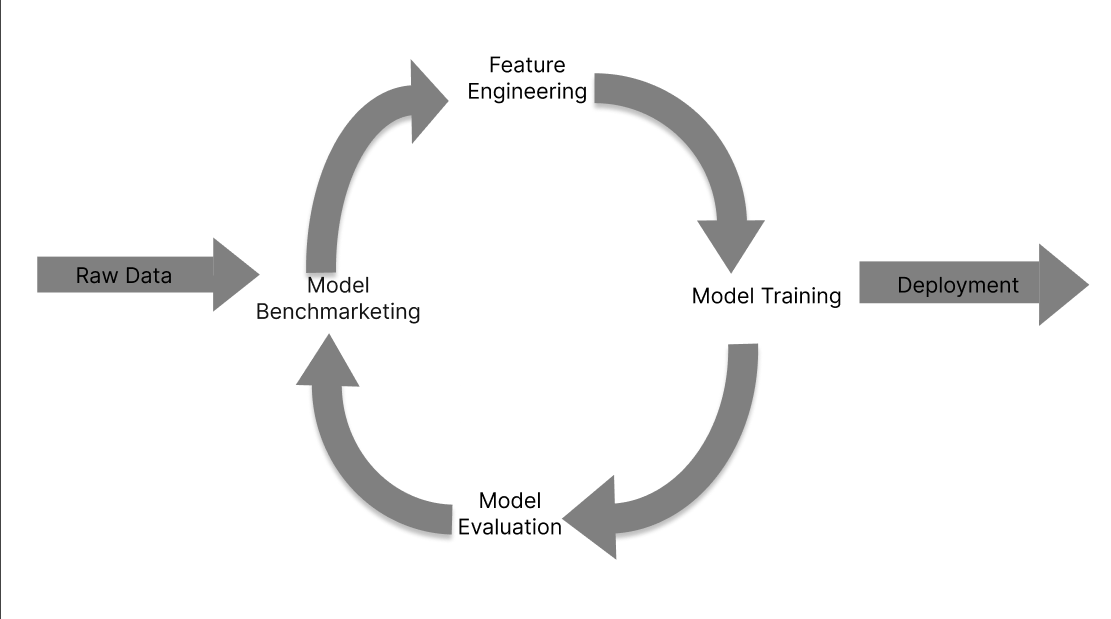How AI is strengthening XDR to consolidate tech stacks

XDR platforms need AI/ML technologies to identify malware-free breach attempts
while also looking for signals of attackers relying on legitimate system tools
and living-off-the-land (LOTL) techniques to breach endpoints undetected. ...
VentureBeat spoke with several CEOs at RSAC 2023 to learn how each perceives the
value of AI in their product strategies today and in the future. Connie Stack,
CEO of NextDLP, told VentureBeat, “AI and machine learning can significantly
enhance data loss prevention by adding intelligence and automation to detecting
and preventing data loss. AI and machine learning algorithms can analyze
patterns in data and detect anomalies that may indicate a security breach or
unauthorized access to sensitive information well before any policy violation
occurs.” XDR providers tell VentureBeat that the challenge of parsing an
exponential increase in telemetry data, performing telemetry enrichment and
mapping data to schema are the immediate architectural requirements they have.
There’s also the need for real-time cross-collaboration, analytics and alert
prioritization. XDR’s current and future ecosystem is dependent on AI’s
continued growth.
10 ways generative AI will transform software development

The ability to prompt for code adds risks if the code generated has security
issues, defects, or introduces performance issues. The hope is that if coding is
easier and faster, developers will have more time, responsibility, and better
tools for validating the code before it gets embedded in applications. But will
that happen? “As developers adopt AI for productivity benefits, there’s a
required responsibility to gut-check what it produces,” says Peter McKee, head
of developer relations at Sonar. “Clean as you code ensures that by performing
checks and continuous monitoring during the delivery process, developers can
spend more time on new tasks rather than remediating bugs in human-created or
AI-generated code.” CIOs and CISOs will expect developers to perform more code
validation, especially if AI-generated code introduces significant
vulnerabilities. ... Another implication of code developed with genAI
concerns how enterprise leaders develop policies and monitor the supply chain of
what code is embedded in enterprise applications. Until now, organizations were
most concerned about tracking open source and commercial software components,
but genAI adds new dimensions.
Agile Methodologies In The Era Of Machine Learning Development

Both emphasize adaptability and continuous improvement, providing a solid
foundation for building robust ML models. The iterative cycles of Agile resonate
with the constant refinement required in ML algorithms, fostering an environment
conducive to experimentation and learning. Bringing together Agile and Machine
Learning (ML) is like mixing the best of teamwork and smart strategies for
computer programs. Agile is like a way of working that’s flexible and can adapt
quickly, and ML is all about smart machines learning from data. When they come
together, it’s like using a super-smart and flexible approach to make really
cool and smart computer programs ... Everyone has a special skill, like some
friends are good at building, and others are good at deciding what the robot dog
should do.This teamwork also helps if you discover something new, like a better
way for the robot dog to move. Agile allows you to quickly change and improve,
just like trying a new game. ... Unlike traditional software, ML projects
grapple with inherent uncertainties in data and model outcomes, requiring a more
adaptive approach. Navigating these uncertainties is paramount when
incorporating Agile principles.
The AI data-poisoning cat-and-mouse game — this time, IT will win

The offensive technique works in one of two ways. One, it tries to target a
specific company by making educated guesses about the kind of sites and material
they would want to train their LLMs with. The attackers then target, not that
specific company, but the many places where it is likely to go for training. If
the target is, let’s say Nike or Adidas, the attackers might try and poison the
databases at various university sports departments with high-profile sports
teams. If the target were Citi or Chase, the bad guys might target databases at
key Federal Reserve sites. The problem is that both ends of that attack plan
could easily be thwarted. The university sites might detect and block the
manipulation efforts. To make the attack work, the inserted data would likely
have to include malware executables, which are relatively easy to detect. Even
if the bad actors’ goal was to simply feed incorrect data into the target
systems — which would, in theory, make their analysis flawed — most LLM training
absorbs such a massively large number of datasets that the attack is unlikely to
work well.
What Is API Sprawl and Why Is It Important?

Inconsistencies between APIs can stunt the developer experience around
integration. For example, many different design paradigms are used in modern API
development, including SOAP, REST, gRPC and more asynchronous formats like
webhooks or Kafka streams. An organization might adopt various styles
simultaneously. Using various API styles provides best-of-breed options for the
task at hand. That said, style inconsistencies can make it challenging for a
single developer to navigate disparate components without guidance. ... As
cybersecurity experts often say, you can’t secure what you don’t know. Amid
technology sprawl, you likely won’t be aware of the hundreds, if not thousands,
of APIs being developed and consumed daily. Without inventory management, APIs
can slip under the rug and rot. API sprawl can also lead to insecure coding
practices. Security researchers at Escape recently found 18,000 high-risk
API-related secrets and tokens after performing a scan of the web. ... Life
cycle management can also suffer with sprawl. If API versioning and retirement
schedules aren’t communicated effectively, it can easily lead to breaking
changes on the client side.
Rise in cyberwarfare tactics fueled by geopolitical tensions
There are a number of ways in which public-private partnerships can be effective
in addressing cybersecurity threats. First, governments and private companies
can share information about cyber threats and vulnerabilities. This can help to
improve the overall security posture of both the public and private sectors.
Second, governments and private companies can develop joint cybersecurity
initiatives. These initiatives can focus on a variety of areas, such as
developing new security technologies, improving incident response capabilities,
or providing cybersecurity training to employees. Third, governments and private
companies can collaborate on research and development efforts. This can help to
identify new cybersecurity threats and develop new ways to protect against them.
Caveat, when talking about public-private partnerships – what is needed is real
operational and ongoing public-private collaboration is essential for sharing
information, developing best practices, and mitigating risks and is essential
for building a more secure and resilient cyber ecosystem.
New media could bring fresh competition to tape archive market

Glass is becoming another alternative to tape. Microsoft's Project Silica uses
femtosecond lasers to write data to quartz glass and "polarization-sensitive
microscopy using regular light to read," according to Microsoft. Another
company, Cerabyte, uses lasers to etch patterns into ceramic nanocoatings on
glass. Ceramic is resistant to heat, moisture, corrosion, UV light, radiation
and electromagnetic pulse blasts. Ceramic also has another advantage over tape:
Its high durability leads to fewer refresh cycles, according to Martin Kunze,
chief marketing officer and co-founder of Cerabyte, a startup headquartered in
Munich. "Tape has limited durability and needs to be either refreshed or all
migrated onto new formats," Kunze said. This undertaking is expensive and
time-consuming, he said. Kunze added that tape is vulnerable to vertical market
failure. Western Digital is the only company manufacturing the reading and
writing heads for tape. "Assume there is a decision on the board: 'We don't
[want to] run this company anymore because it doesn't bring in as much
revenue,'" he said. The single point of failure could leave enterprises in the
lurch. He sees another problem with tape -- it's stodgy.
Apache Pekko: Simplifying Concurrent Development With the Actor Model
/filters:no_upscale()/news/2024/02/apache-pekko-actor/en/resources/1actor_top_tree-1707735840414.png)
In the actor model, actors communicate by sending messages to each other,
without transferring the thread of execution. This non-blocking communication
enables actors to accomplish more in the same amount of time compared to
traditional method calls. Actors behave similarly to objects in that they
react to messages and return execution when they finish processing the current
message. Upon reception of a message an Actor can do the following three
fundamental actions: send a finite number of messages to Actors it knows;
create a finite number of new Actors; and designate the behavior to be applied
to the next message. ... Pekko is designed as a modular application and
encompasses different modules to provide extensibility. The main components
are: Pekko Persistence enables actors to persist events for recovery on
failure or during migration within a cluster that provides abstractions for
developing event-sourced applications; Pekko Streams module provides a
solution for stream processing, incorporating back-pressure handling
seamlessly and ensuring interoperability with other Reactive Streams
implementations...
How Can Synthetic Data Impact Data Privacy in the New World of AI

Data from the real world is often inherently biased. This is because the data
used to train models is largely gathered from across the internet, reflecting
biases present in society and the socio-economic groups prevalent in the
social media spaces used to gather this data. Data scientists have turned to
synthetic data and ‘Digital Humans’ to combat these biases. With Digital
Humans, data scientists can vary elements of ‘Digital DNA,’ such as et,’ city,
size, and clothing, and mix with real-world data to create more representative
and diverse datasets. Of course, this also protects image rights and PII
exposure that could come from using images and footage of people in the real
world. Mindtech worked with a construction company that wanted to develop
autonomous site vehicles. The company wanted to enhance these vehicles’ safety
and accrue a broader range of data to train them. As a result, it used
synthetic data to create diverse synthetic datasets to train these vehicles to
identify various people on site, no matter size/shape/sex/ethnicity/clothing/
– the vehicles could stop their journey if someone were blocking their way.
The Great Superapp Dilemma: Business Ambitions vs User Privacy

If we put privacy aside for a moment, the benefits of a possible superapp
cannot be denied. We could say goodbye to the hundreds of online accounts that
operate as an isolated silo managed by unrelated services and domains and the
chore of updating account details across them all, one by one. And, as well as
promising a much simpler user experience through a single application, it
would unlock new convenient services using a broader set of data, and allow
for increased innovation that adds value for users – such as unified health
metrics, consolidated banking services, cohesive government-related accounts,
integrated social networks, or unified marketplaces. However, managing vast
volumes of accessible data – which has grown excessively since the era of big
data, and will no doubt continue with the advent of AI – is operationally
challenging to say the least. ... With these concerns in mind, companies
working on superapp development must address issues including managing and
recovering from identity theft, securing data against breaches, and ensuring
that data access aligns with the user’s consented sharing policy.
Quote for the day:
''Effective questioning brings
insight, which fuels curiosity, which cultivates wisdom.'' --
Chip Bell
No comments:
Post a Comment